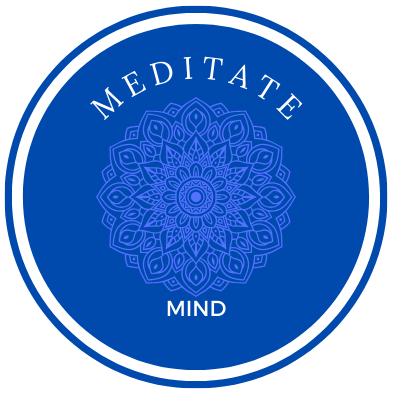
I’m going to kick things off by diving into the mindfulness revolution that’s been sweeping across the globe. If you haven’t noticed, meditation is no longer reserved for monks in remote monasteries; it’s mainstream, touted by CEOs, athletes, and celebrities alike for its incredible benefits.
You’re going to find out about the myriad health benefits meditation can offer. Studies have linked it to reductions in stress, improvements in concentration, and an overall boost in happiness. Imagine being able to tap into a greater sense of calm and clarity in your daily life.
But this isn’t just about temporary relaxation; it’s also about the lasting impact on mental well-being. Regular meditation practice is akin to exercise for your brain, strengthening your ability to maintain focus, and stay present amidst life’s chaos.
I’m here to help you understand just how powerful a tool meditation can be in your personal health and wellness toolbox. Whether you’re looking to manage anxiety, improve sleep quality, or simply find a moment of peace in your hectic schedule, meditation might just be the game-changer you need.
Now, what’s truly fascinating is the variety of meditation techniques available. From the silent introspection of Mindfulness meditation to the mantra-based Transcendental approach – there’s a method for everyone. Guess what? That’s exactly what we’re going to explore in the next section.
Exploring Different Meditation Techniques
I’m going to give you a tour of the diverse world of meditation practices. It’s important to recognize that there’s no one-size-fits-all here, and the sheer variety ensures there’s something for everyone.
- Let’s start with Mindfulness Meditation. This is about being present and fully engaging with the here and now. By focusing on your breath or bodily sensations, you’re training your mind to remain aware without judgement. It’s incredibly versatile and a great way to get started.
- Next, we have Transcendental Meditation. You might have heard of it; it’s got quite the following. This technique involves the use of a mantra that you repeat to help you settle down into a state of deep rest. It’s been studied quite a bit and has shown promise for reducing stress and anxiety.
- Guided Meditation is another popular choice. Through descriptive imagery and storytelling, a guide leads you to a place of peace and relaxation. You don’t have to do much; just listen and let your imagination take the wheel.
Each of these techniques brings its own flavor to the meditation table. And now that you’ve got a sense of what’s out there, it’s all about finding your match. Remember, what works for one person might not be the ideal choice for another.
How to Choose the Meditation Technique That’s Right for You
I’m here to help you match your lifestyle and goals with the right meditation technique. It isn’t just about picking the most popular method; it’s also about what aligns with your personal aspirations and daily routine.
First off, consider what you’re aiming to achieve. Are you looking to manage stress, enhance concentration, or perhaps connect more deeply with yourself? Identifying your main objectives can steer you toward a technique that caters to those goals.
Your lifestyle is another crucial factor. If you have a hectic schedule, short mindfulness exercises might suit you better. For those who can dedicate more time, practices like Transcendental Meditation could be more beneficial. It’s all about fitting meditation into your life without it feeling like a chore.
Don’t shy away from trying out different styles. You might start with guided meditations through an app and then evolve into unguided sessions. Remember, it’s perfectly okay to mix and match techniques until you find one that feels right.
Give each method a fair shot. Meditation is a skill, and like any other, it requires practice. Commit to a technique for a couple of weeks; this will allow you to really see if it resonates with you before deciding whether to stick with it or move on.
You can always adjust your approach down the road. As you grow and change, your meditation needs might evolve as well. So, stay open to new styles of meditation and continue to prioritize your mental well-being as life unfolds.
Integrating Meditation into Your Daily Life
I’m going to lay it out straight—it’s not enough to pick a meditation technique; you need to make it a part of your day. And let’s be real, that’s sometimes the hardest part. But I’m here to help you with that. Integrating meditation into your life doesn’t have to feel like another to-do list task. It’s about finding slots in your routine where meditation can naturally fit.
You might think you need to meditate for hours to see benefits, but that’s not the case. Start small, maybe five minutes each morning, and build from there. It’s surprising how just a little bit of time being present can shift the entire vibe of your day.
Consider the barriers you might face: a busy schedule, a noisy home, or perhaps feeling uncertain about meditating ‘the right way.’ We’ve all been there. The trick is to address these issues head-on. Choose a quiet spot, maybe wake up a bit earlier, and remember that there’s no perfect way to meditate—only what works for you.
Now, to stay on track, I’m a big fan of using technology to our advantage. Meditation apps are fantastic for this—they’re like having a personal meditation coach. They remind you to meditate, offer guided sessions, and can help you keep a streak going. Trust me, watching that streak grow can be oddly satisfying and motivating.
Lastly, don’t overlook the power of community. Join a group or find friends to meditate with. Not only can they offer support, but they can also keep you accountable. Believe it or not, meditating with others can add a whole new layer of depth to your practice.
Choose something that resonates with you. Maybe it’s meditating during lunch breaks, or right before bed. What’s important is that it feels doable. Remember, meditation is a journey, not a destination. You’re learning and growing every time you practice.
